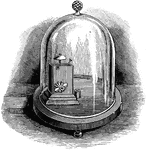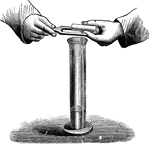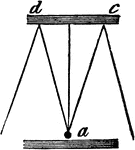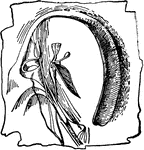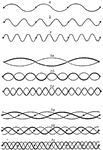Clipart tagged: ‘sound’

Membranous Labyrinth
The membranous labyrinth is lodged within the bony labyrinth and has the same general form; it is, however,…

Musical Instrument
A musical instrument is an object constructed or used for the purpose of making the sounds of music.…

Reflection of Sound Using a Reflector
"Hold a lamp reflector or other large concave mirror directly facing the sun, so as to bring the rays…
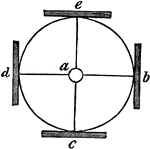
Sound Reflection in a Circle
"In a circle, sound is reflected from every plane surface placed around it, and hence, if the sound…

Sound Refraction
"Fill with carbon dioxide a large rubber toy balloon or other double-convex lens having easily flexible…

Noise Making Siren
A siren is a loud noise maker. The original version would yield sounds under water, suggesting a link…

Sonometer
A sonometer is an apparatus by which the transverse vibrations of strings can be studied. It is also…
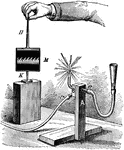
Flame Sonometer
"Apparatus used that will show changes in the flame upon the glass sheet M, when sound is introduced…
Sound Wave, fundamental frequency
"Bow or pluck the string of a sonometer near its end, thus setting it in vibration as a hole. The string…
Sound Wave
"Lightly touch the wire at its middle point with the tip of the finger or the beard of a quill; the…

Sound Making
Sound making amoung animals serves to aid in frightening away enemies or in warnng companions of their…

Telephone Transmitter Carbon Microphone
Edison invented and developed the carbon microphone used in all telephones along with the Bell receiver…
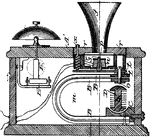
First Uses of the Telephone
This telephone uses magnets that converts sound into electrical signals to be transmitted over distances…

Tone
An example of how to produce a tone. This illustration shows one end of a string fixed to a hook and…
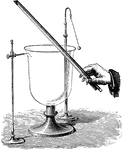
Tone
"A glass bell is fixed to stand, and beside it is a stand carrying a small ivory ball. This is so arranged…

Tone
"If a light strip of steel is firmly gripped at one end in a vice and the other end plucked aside, it…
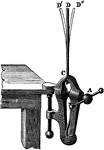
Sound due to Vibrations
"Grasp one end of a straight spring made of hickory or steel in one end of a vise, as shown. Pluck the…
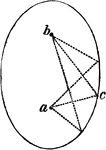
Whispering Gallery
"It is apparent that the auditor, in this case, must be placed in the centre from which the sound proceeds,…
